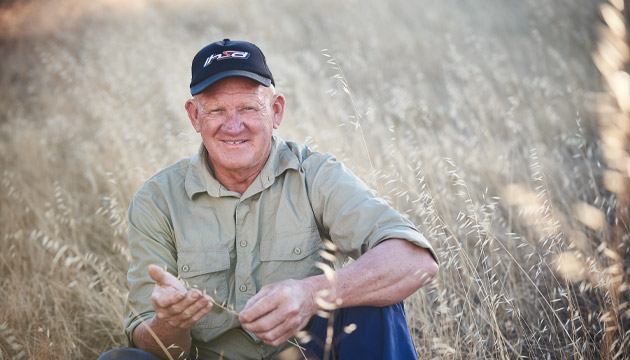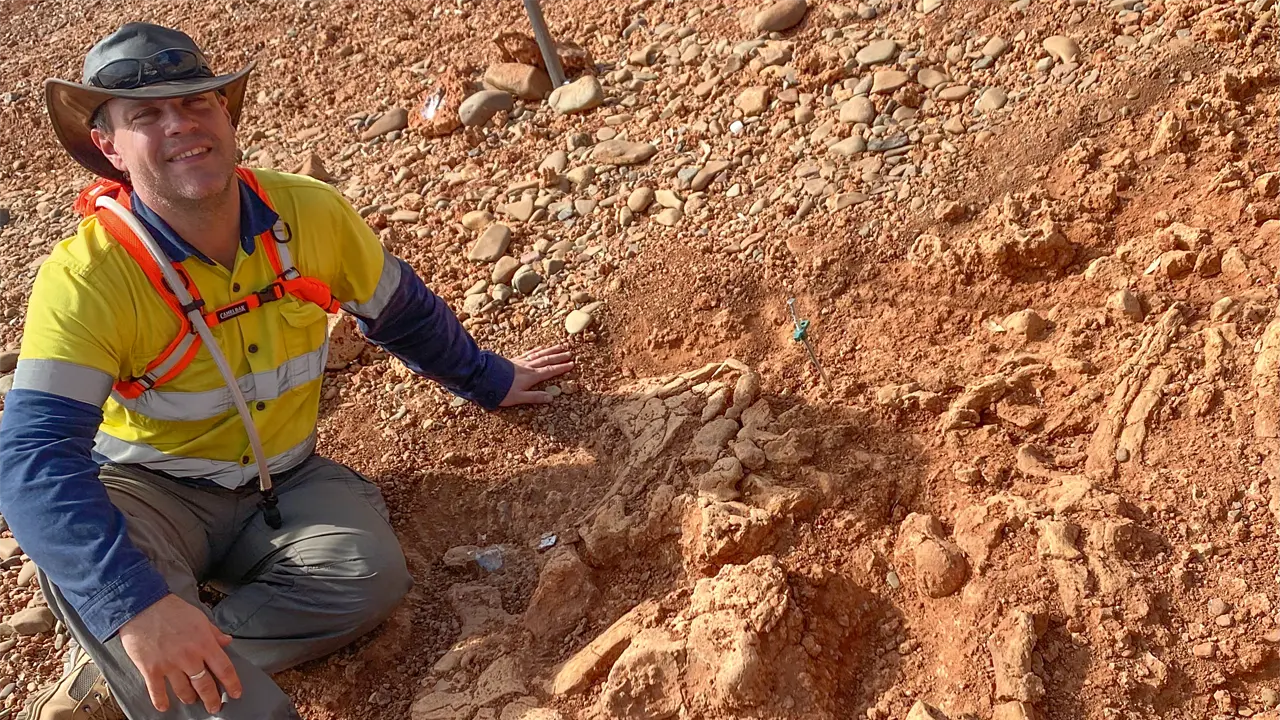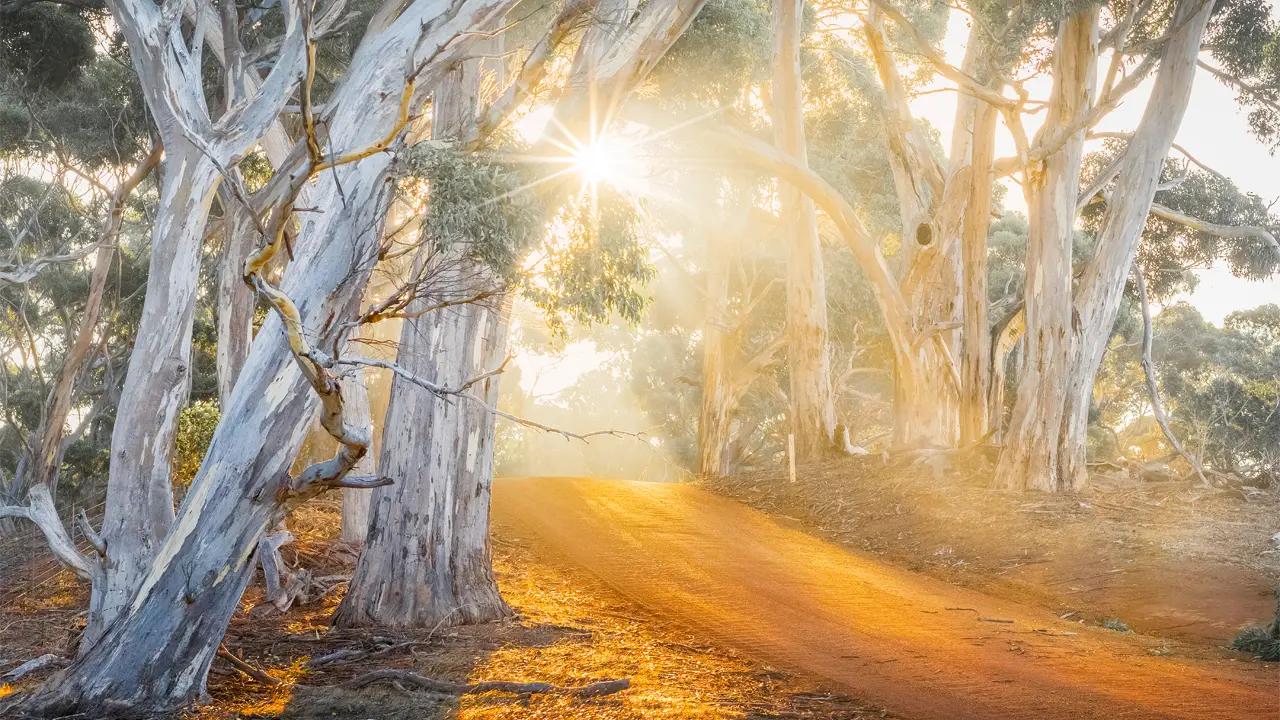Inventing ways to farm better is Ray Harrington’s life purpose.
Story Jill Griffiths Photos Rebecca Mansell
The thing you really need to understand,” Ray Harrington OAM says, his gaze steady, his voice compelling, “is that there is no ‘I’ in team. There really isn’t. Everything I’ve done, I’ve done with other people. It’s about the team you play with. If it wasn’t for the team, none of it would have happened. I’m like a footy coach, gathering people around me.”
But Ray Harrington, 72, is not a footy coach; he’s a farmer and inventor, and the ‘everything’ in his statement encompasses a whole lot of agricultural innovation. The Harrington story of invention kicks off in the early 1970s, when Ray and his older brother David were crutching sheep on the family farm near Darkan in south-west Western Australia. Some days they’d crutch hundreds across the boards in the shearing shed: lifting, dragging and tipping sheep, sweating and possibly swearing. Tough, backbreaking work. So, the boys came up with a prototype sheep-handling device – a cradle – to make the job easier. This relatively simple device flips and holds a sheep on its back at waist height while it’s crutched. A lever sets the sheep back on its feet and releases it.
“David was using the [new] cradle and I was crutching across the boards,” Ray says. “By the end of the week I said ‘bugger this, we’re building another one over the weekend’.” Their father Brian, also an innovative farmer, worked all weekend and built a second cradle. When Douglas – the youngest of the three Harrington brothers – came home from national service, he fine-tuned the design and commercialised it.
Versions of the Harrington sheep-crutching cradle are now used on farms throughout Australia. Over the years, the Harringtons developed other sheep-handling equipment, most notably the jetting race, which enables two operators to jet up to 5000 sheep a day (to prevent flystrike) without being covered in chemicals.
The Darkan farm is on loose, gravelly soils that are prone to erosion. Conventional methods of turning over the soil before planting simply didn’t work. The brothers describe the heartache of finding their freshly cultivated paddocks washed away after heavy rain, all the topsoil relocated across the road or in a neighbouring paddock. “Then we had this idea that instead of turning the soil over, we could just cut a line through it and drop the seed in,” Ray says. “It wouldn’t disturb the stubble and that would hold the soil together.”
They took to the workshop and made up some ‘knife points’ to give it a go. They sowed an oat crop with the points – all in lines running down the hill on a steepish slope. “That night it poured and I lay awake worrying about it,” David says, shaking his head. “I was sure it would be washed away and we’d have great, deep furrows down the hillside. The next morning, I went out and, lo and behold, it had held.” That was 1976 and the birth of no-till agriculture in Western Australia, possibly Australia.
“We eventually got a few people together and the Western Australian No-Tillage Farmers Association [WANTFA] was born out there in the paddock,” Ray says. “There were 13 people and it was April Fools’ Day and they elected me president.” WANTFA is now the largest grower group in Western Australia, and no-till and minimum-till farming has become a standard approach in growing grain.
By the mid-1990s each of the Harrington brothers had married, children and established themselves on farms of their own. They continued tinkering and seeking better ways of doing things. Facing difficult personal circumstances and the wool-price crash, Ray sold all his sheep and turned to continuous cropping to save his farm. Continuous cropping brought great benefits in terms of yields but, in combination with the no-till farming system, forced a reliance on herbicides. Ray was aware that the prolonged use of herbicides risked herbicide-resistant weeds. It was in response to this challenge that he developed what is probably his best known and most elegant invention – the Harrington Seed Destructor (HSD).
Ray decided that the best way of dealing with weeds was to destroy their seeds in the chaff fraction at harvest, before they were spread around the paddock and could germinate. He looked at various ways of doing this, and investigated “cooking, carting, catching and cremating” before settling on crushing. “I had decided I wasn’t going to burn and I wanted to return all the residue to the paddock,” he says.
“I knew that if I put the seeds back out onto the paddock,
I was going to run into problems with herbicide resistance.
“Geoff Glenn, an AgMaster engineer, told me about a thing called a cage mill – it’s mining technology that is over 100 years old. It has three rows of bars and they rotate in opposite directions. The outside row is doing 500 kilometres per hour – no seed survives that. It’s not a close-grind machine; it’s a whack machine.”
Geoff built Ray a cage mill to “play about with”. Later, the Australian Grains Research and Development Corporation (GRDC) invested funds to further develop the machine. The result was the Integrated Harrington Seed Destructor (iHSD), manufactured by DeBruin Engineering in South Australia. Trials have shown that the iHSD, which bolts directly onto a combine, destroys 95–98 percent of weed seeds in the chaff fraction. The iHSD has won a string of national and international awards, including an international Edison Award for Smart Agriculture in 2015, which was presented to Ray in New York.
“Ray Harrington is one of the smartest, most tenacious people I’ve ever met,” says University of Western Australia professor Stepehn Powles, an expert in weed control who contributed funds to help Ray develop the iHSD prototype. “He’s an outstanding Australian, a real force of nature.”
Despite a lifetime of invention, Ray says he and his brothers haven’t really made money out of anything, except the AgMaster no-till seeding system. “But it’s never been about the money anyway,” he says. “There’s a bigger reason. You’ve got to believe in something. That’s why I’m farming; that’s why I keep farming. There’s only so many hours a day you can play bowls. At the end of the day, you’ve got to know you made a difference.”
The full version of this story was published in both OUTBACK magazine and the 2019 edition of our special one-shot magazine Great Australians
This story excerpt is from Issue #126
Outback Magazine: Aug/Sep 2019










